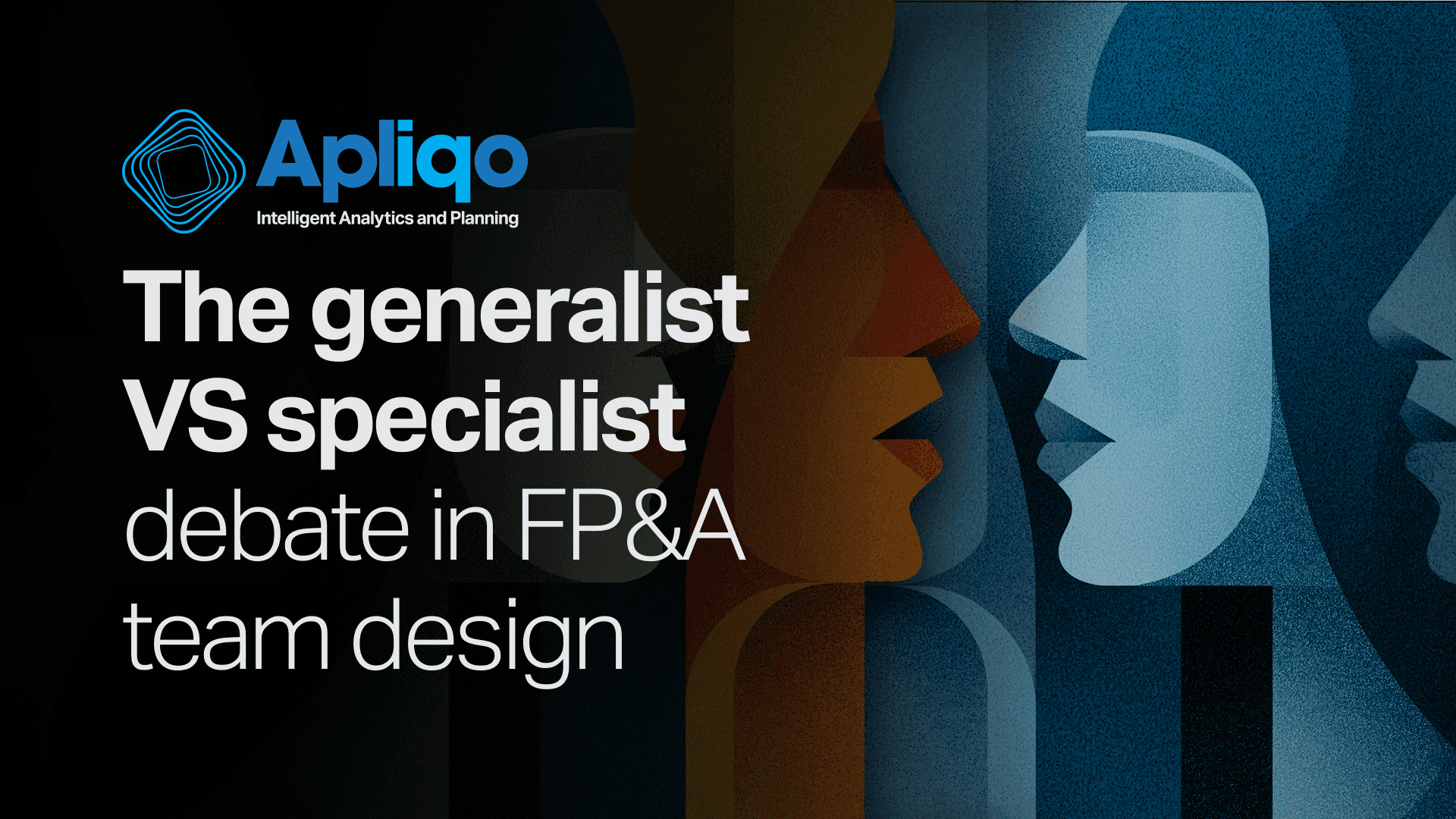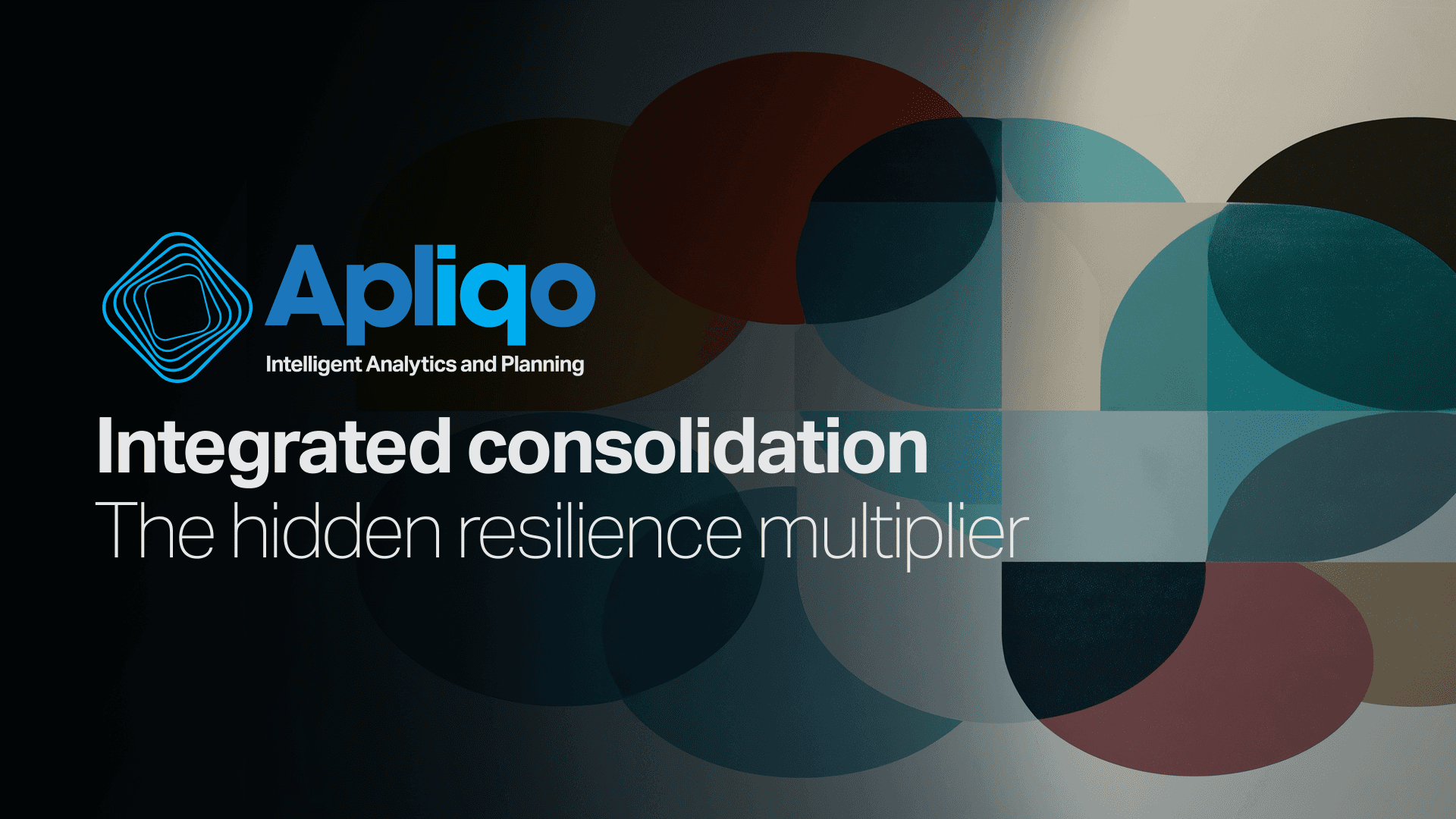Productising FP&A: Treating stakeholders as customers
Traditional FP&A functions often operate as order-takers, responding to requests without understanding the deeper business context or decision-making needs of their stakeholders. Leading FP&A teams are transforming their impact by adopting a customer-centric mindset that treats internal stakeholders as valued clients, focusing on outcomes rather than outputs, and building analytical capabilities around genuine business needs. This article explores how shifting from a reactive support function to a customer-focused value creator can dramatically enhance FP&A's strategic contribution.
Oct 30, 2025
//
5
min read
Subscribe to Apliqo Insights
The most successful FP&A teams share a common characteristic that sets them apart from their peers: they think and operate like customer-focused service providers rather than internal support functions. This fundamental mindset shift transforms how they approach stakeholder relationships, design analytical solutions, and measure their own success.
Too many FP&A teams operate in reactive mode, responding to requests without deeply understanding the business context or decision-making needs behind them. They produce technically accurate analyses that may miss the strategic mark, create reports that gather digital dust, and wonder why their sophisticated work doesn't seem to drive meaningful business impact.
The transformation begins with a simple but profound realisation: every internal stakeholder is a customer whose success directly contributes to organisational performance. When FP&A teams embrace this customer-centric mindset, they naturally begin asking better questions, designing more relevant solutions, and building stronger relationships that amplify their strategic influence.
Understanding your customers' real needs
The first step in this transformation involves genuinely understanding what success looks like from your stakeholders' perspectives. Traditional FP&A often focuses on what they think stakeholders need based on technical capabilities or historical requests. Customer-focused FP&A starts with understanding what stakeholders are trying to achieve and how analytical insights can help them get there.
This requires moving beyond surface-level request fulfilment to understand the broader business context. When a sales director requests a territory performance analysis, a customer-focused FP&A team investigates the underlying challenge: Are they trying to identify underperforming regions? Optimise resource allocation? Support compensation decisions? Understanding the ultimate business objective enables more targeted and valuable analytical solutions.
The most effective FP&A teams invest time in understanding their stakeholders' success metrics, competitive pressures, and strategic priorities. They attend business reviews, participate in strategic planning sessions, and maintain regular dialogue that extends beyond formal analytical requests. This deep business understanding enables them to anticipate needs, provide proactive insights, and design analyses that directly support business outcomes.
Customer intimacy also means understanding communication preferences and decision-making styles. Some executives prefer high-level summaries with clear recommendations, whilst others want to understand underlying assumptions and methodologies. Operational managers may need detailed breakdowns that support tactical decisions, whilst strategic leaders require insights that inform longer-term planning. Adapting analytical deliverables to match customer preferences enhances both comprehension and impact.
Designing solutions, not just analyses
Traditional FP&A often approaches requests as analytical problems to be solved through technical expertise. Customer-focused FP&A treats each request as an opportunity to design solutions that address broader business challenges. This solution-oriented mindset transforms how analytical work is conceived, executed, and delivered.
Instead of simply providing requested analyses, effective FP&A teams collaborate with stakeholders to understand the decisions that need to be made and work backwards to design analytical approaches that best support those decisions. This might mean combining multiple data sources, incorporating external market intelligence, or developing scenario models that illuminate trade-offs and implications.
Solution design also considers implementation and actionability. Technical accuracy becomes table stakes; the real value lies in providing insights that stakeholders can actually use to drive better business outcomes. This often requires thinking beyond traditional analytical boundaries to consider organisational capabilities, resource constraints, and change management implications.
The best FP&A teams become consultative partners who help stakeholders frame business problems, identify key analytical questions, and interpret results in the context of broader strategic objectives. Rather than simply answering questions, they help stakeholders ask better questions and understand the implications of different analytical findings.
Building trust through delivering consistent value
Customer-focused FP&A teams understand that trust is their most valuable currency, built through consistent delivery of relevant, timely, and actionable insights. This trust foundation enables deeper collaboration, more strategic involvement, and greater influence over business decisions.
Building trust starts with reliability in delivering what you promise when you promise it. However, customer-focused FP&A goes beyond meeting basic expectations to consistently exceed them by providing additional context, identifying related opportunities, or suggesting alternative approaches that might better serve the underlying business need.
Transparency about analytical assumptions, data limitations, and uncertainty ranges builds credibility and helps stakeholders make more informed decisions. Rather than presenting analyses as definitive answers, effective FP&A teams frame results as insights that illuminate business situations whilst acknowledging areas of uncertainty or assumption.
Proactive communication about potential issues, emerging trends, or changing conditions also demonstrates genuine business partnership. Customer-focused FP&A teams don't wait for stakeholders to identify problems; they actively monitor business performance and market conditions to provide early warning signals and strategic insights.
Measuring success through customer outcomes
Traditional FP&A might measure success through analytical productivity metrics: number of reports produced, analyses completed, or requests fulfilled. Customer-focused FP&A measures success through customer outcomes: decisions influenced, business performance improved, or strategic objectives advanced.
This outcome orientation requires understanding how analytical insights contribute to business results. Did the pricing analysis lead to better margin outcomes? Did the market segmentation study inform successful product launches? Did the operational efficiency recommendations actually reduce costs? Tracking these connections helps demonstrate FP&A value whilst identifying opportunities for enhanced impact.
Customer satisfaction becomes a critical success metric, measured through regular feedback, stakeholder engagement levels, and request patterns. Satisfied customers naturally become advocates who expand FP&A's influence and create opportunities for greater strategic involvement.
The most sophisticated FP&A teams develop informal customer advisory processes, regularly gathering feedback about analytical needs, service quality, and emerging business challenges. This stakeholder input directly informs capability development priorities and ensures that FP&A investments align with genuine business requirements.
Evolving capabilities around customer needs
Customer-focused FP&A teams continuously evolve their analytical capabilities based on stakeholder needs and business strategy rather than technical possibilities or industry best practices. They invest in skills, tools, and methodologies that enhance their ability to serve customer requirements and drive business outcomes.
This customer-driven capability development often leads to unexpected analytical directions. An FP&A team serving a rapidly growing technology company might develop expertise in cohort analysis and customer lifetime value modelling. A team supporting a manufacturing organisation might specialise in supply chain analytics and operational efficiency measurement.
The key insight is that analytical excellence means different things in different business contexts. Customer-focused FP&A teams develop deep expertise in the analytical approaches that matter most to their specific stakeholders rather than pursuing generic analytical sophistication.
This specialisation creates competitive advantages that are difficult for external providers to replicate. Deep business understanding combined with analytical expertise creates unique value that strengthens FP&A's strategic position within the organisation.
Creating business impact through partnership
The ultimate measure of customer-focused FP&A success lies in business impact: better decisions made, opportunities identified, risks mitigated, and performance improved. This impact emerges naturally when FP&A teams genuinely embrace their stakeholders as customers deserving of excellent service.
Customer-focused FP&A teams become trusted advisors who contribute to strategic discussions, influence resource allocation decisions, and shape business direction through analytical insights and business judgment. They move from responding to requests to anticipating needs, from providing analyses to recommending actions, from supporting decisions to influencing outcomes.
This transformation requires patience and persistence. Building customer relationships and demonstrating consistent value takes time. However, organisations that successfully implement customer-focused FP&A approaches consistently report higher stakeholder satisfaction, greater strategic influence, and measurable improvements in business performance.
From support function to strategic partner
The transformation from traditional support function to customer-focused strategic partner represents one of the most significant opportunities available to modern FP&A teams. By genuinely embracing stakeholders as customers and focusing relentlessly on their success, FP&A teams can dramatically enhance their strategic contribution and business impact.
This customer-centric approach creates virtuous cycles of improved relationships, enhanced trust, and expanded influence that compound over time. As FP&A teams demonstrate consistent value through customer focus, they naturally gain access to more strategic projects, deeper business involvement, and greater organisational influence.
If you're ready to transform your FP&A approach through customer-centric principles, we'd welcome the opportunity to share our experience, insights, and technology to help you do that. Get in touch today to find out more.









